How to reach 1,000 blogs on wine. Always scribble, scribble, scribble! Eh, Mr. Gibbon? A lot of words, some not necessarily in the right order, have flowed under the bridge. I am not averse to the Franken-blog, (bolting several blogs together and galvanising it with a fresh introductory and valedictory sentence). Is writing about one’s own blogs a form of literary self-cannibalism? Of course, it is! There is nothing new under the sun etc and, every so often, we must return to our muttons. 1,000 is a lot. 500 would be a lot on the subject of wine alone, actually, and surely qualify for the golden overheated-laptop award.
What is the secret of this excess? Let’s not flatter ourselves that too many people read these musings. And who, nowadays, after all, reads a whole chunk o’ blog from beginning to end? The habit is surely to skim for the glitter of sound-bite-word-gold and discard the rest as chaff. Modern blogs thus tend to take the form of a series of bullet points, or two-line snappy paragraphs, the easier for the tired (lazy) eyes to abstract and digest the central thesis. The modern blog also needs a witty, preferably punning, title, as decent clickbait. Finally, and this is an objective rather than a prerequisite, a modern blog should annoy someone important to generate some toasty social heat. As soon as offence is caused, intentionally or otherwise, others will jump in and take possession of the subject, and the blog itself will acquire a life force greater than the original words could ever wield the matter.
The gravitational pull of a blog can never hope to compete with the modern event horizon of an Instagram photo on a forum featuring select ‘unicorn’ bottles. Now we literarily genuflect in front of pictures and winning #s. In fact, I can’t even be bothered to write the word “hashtag”. Oh, I just did.
Looking back at the first pieces I tapped out for the Les Caves blog spot is a strange sensation. I originally started writing about natural wine in the year of our Lord 2006, when the subject matter was on nobody’s radar, and license was cheapo. Alice Feiring had already begun to tackle the subject with her customary wit, diligence and literary sharpness, but as far as I knew, natural wine pretty much comprised a few Parisienne cavistes and tucked-away wine bars selling and serving cloudy wild beverages. Although not a long time ago, it seems (his voice dripping with nostalgia) a much more innocent time.
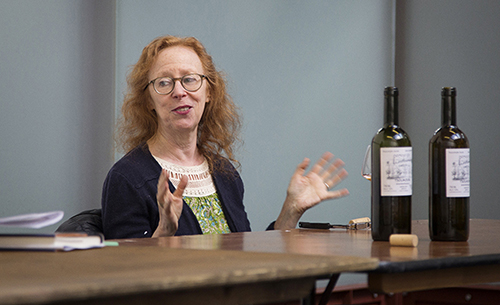
Lacking the more polished newsletter format or even a straightforward blog home page, I simply used to fire off prodigious opinionated volleys to everyone unfortunate enough to be in my mail box at the time – whether they were interested or not in receiving them. The most I could be blamed for (in my opinion) was RSI caused by frantically hitting the delete button. These volleys would be feisty declamatory perorations; I loved, after all, to have a go at the imaginary enemy, set fire to all the sleekit straw men arguments, and, if someone had published some snotty piece having a go at natural wines, biodynamic growers or defenders of the faith, it seemed only part of the rhetorical game to biff them back with interest. Who doesn’t love a good feist? Natural wine needed to be nurtured; the movement was, after all, an embryonic one. Of course, the movement would have survived and succeeded without my leaping to its defence, but I didn’t know that at the time. I usually started and finished the archetypical blog on the affirmative rather than negative, the plea being “let there be funk.” And there was funk. I had just discovered the quirk, strangeness and charm of a whole new breed of wines and I wanted to share the love. At that time, there were no social media outlets to holler enthusiastically from. One had to do it longhand, so to speak.
Over the years the funk became more functional. There were vineyard trips to describe, growers’ profiles to be assembled, book reviews, tastings and wine dinners to be decanted, there were pet peeves and pet epiphanies. We aimed to post blogs twice a week on average and not fall into any bad (or good) habits.
Whatever people were thinking as they pressed the delete button I will never know, but out there in the wider wine world, there were simmerings of irritation. Whereas I viewed the wine trade as an industry populated by a coterie of traditionalists, conservatives and individuals who were protective of their reputation and the status quo, Les Caves was probably seen as a bunch of parvenus and whippersnappers, a ragtag collection of barrow boys and girls flogging any old tat in the name of natural wine. The idea of selling something in bad faith was difficult for us to get our heads around. That idea presupposes that consumers are sheep, intoxicated by the notion of drinking something natural without regard to the taste, like swallowing medicine that tastes disgusting. We did have the luxury of buying and selling what we liked – because the wine bars served as an outlet for the wines – and because there is no greater guide for what works than your instincts about what is good.
Alice was the real lightning conductor though at this time of the birth of natty wine; her book The Battle for Wine & Love, a plea for authenticity and a declaration of war against the phenomenon known as Parkerisation, started the heated debate-ball rolling. By dint of embracing and yahooing about the funk, we were viewed as accessories to wine crime.
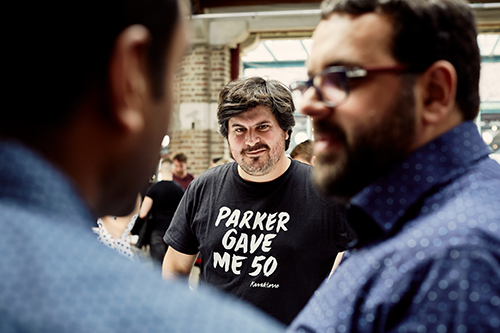
At first, many journalists and commentators were intrigued by “the shock of the new”, but many did not understand the wines and the philosophy behind them, and felt this was a movement that had passed them by, without so much as a by-your-leave. Surely, wine trends should be exclusively determined by the accredited wine commentariat, not unknown small companies with neither a pr nor media presence, relying on the sheer natural force of sales to make any impression with the wines. The audacité! The chutzpah!
All this yakking coalesced into an either/or dichotomy. You had to be on one side of the argument, or the other. Or find an argument to have in the first place. If you liked natural wines, and expressed your preference, you were probably perceived as a zealot. And called one. Such was the tenor of the caricaturing of the people who loved to drink the wines that we loved to drink. As our own Eric Narioo so aptly puts it: “There are the wines that I like, that he hates. And there are the wines that he likes, that I would never drink. And somewhere in the middle are the wines we both like drinking and we drink together.” This surely was the spirit of civility and copinage! Yet when negative feelings exist in the blogosphere they tend to infect the general discourse. It was never necessary for me to state that all wine, conventionally-made or natural, has a place in the world, and that just because I don’t drink a certain style of wine, that does not make my view either morally superior or patronising. All this baying for intellectual blood led to many a blog revolving around the theme of “Manichean Street Preachers.”
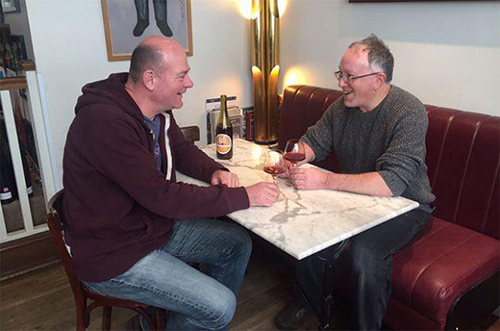
One year, one of our competitors even used the introduction to their wine portfolio to explicitly attack the natural wine phenomenon. And Les Caves, by analogy. Not that we would rise to such obvious bait. The lesson is that writing, in whatever form it takes, can and will be scanned for offence given. Once you commit to paper or share your opinionated opinions on virtual forums, they are out there, extra-pointy!
The hostility towards the natural wine phenomenon had grown out of all proportion. To anything! It had become a weird form of gaslighting. It was as if the old commentariat was raging at the dying of the light. Or so it seemed. Yet, the reality was that normal people were drinking the stuff without fanfare, sommeliers were slowly incorporating bottles onto their lists and retailers were stacking their shelves with the stuff.
Unfortunately, most people remember the brief conflagrations of controversy, rather than the lyrical stuff, the wines we drank, relished and that moved us to write about them.
As natural wine appeared more in the public domain, a lot of bees flew out from under bonnets. Like the mythical London buses, these bee-broadsides tended to come in threes. I half-suspected they were brought on by the full moon, but other theories included that they were in fact brilliant stone-faced parodies by natural wine lovers to hoist certain (usual suspect) critics on their own petards. If so, I offered to duly punish myself for my irony-radar going amiss. In response, the blog was prey to the ramblings of one Panda Jerk-Show, a double-barrelled conflation of wine critics, whose elegant slumbering would be disturbed by the word “natural” being taken in vain. A mighty tolling of bells would alert our hero to this fracturing of a commandment, he would instantly leap into action, donning his a(r)mour-propre to do battle the naturalist barbarian hordes.
***
Anyone can drink wine. By the same token anyone can write about wine. It is hard to think, however, of a subject that is so poorly, uninformatively and unimaginatively written about, so ignored by TV and radio, and commented upon by people whose aim seems more to foment discord than to shine a light on the subject. One of my pet bugs (and something that I have written about in blogs) is that wine may be a growth industry (I hate that word) and yet it scarcely merits any attention in the national press. The wine columns, such as they are, are compressed into a handful of words. TV tends to infantilise wine by treating it is as product – invariably a supermarket one – and a generic beverage.
The reality is completely different. When you visit growers, see the vineyards and the winery, talk to them about the craft, their reasons for doing things, it becomes pretty clear that winemaking involves hundreds of decisions, a combination of hard-won knowledge and respect for nature, adapting and pivoting. The reality is that a new generation of consumers is curious about wine in a different way than previous ones. They want to know that the farming is ethical, that the winemaking is done without chemicals, they want to know if there is some special about the wine, something that would increase their enjoyment of the bottle.
Moving to 2011, a key year for the growth in perception of natural wine in the UK. I think there was a lot of controversy then, because of the Natural Wine Fair (splitting subsequently into Real Wine & RAW) and the self-evident growth in sales of natural wines and the threat that appeared to pose to certain sectors of the wine industry. For some, Les Caves had gone from being quirky and left-field to becoming a clear and present commercial danger. This is the nature of growing a business. You reach a point of popularity for being original and passionate, and then you get in the neck from big and small companies alike.
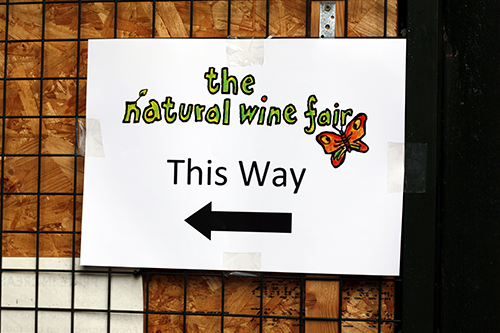
At the point we launched the Caves blog officially (towards the end of 2012) the wine world scenery had changed significantly. Yes, there were plenty of arguments still about the nature and the quality of the wines and the legitimacy of the terminology, but the moment one writer solemnly announced that we would hear no more of this accursed term/phenomenon of natural (we love those New Year’s predictions), that was the moment I knew the “argument” had been won, that natural wine had put its roots down deep and established a culture – of acceptance – and that the future for growers, their wines, the importers and retailers, was relatively secure. The reasons? Well, methinks the writer protesteth too much. Secondly, and more importantly, that the new generation of wine drinkers no longer received their opinions about wine from traditional sources, but tended to follow personal recommendations, or try wines themselves before concluding whether they liked them or not.
But really, natural wine, as something that consumers were more interested to try (for a change of direction, because of the very idea of nothing-added wine, or because of the stories in the bottles and the provenance of the juice) was a decided reaction against homogeneity, the supermarket culture, and the relentless power of the big brands. Natural wines were seen as unique, symbolising the spirit of diversity, and that had to be a good thing.
Without a huge amount of moving or shaking, Les Caves de Pyrene happened to be in the forefront of this movement. Not that it was a movement in the early days, these few natty drops in the ocean of general wine consciousness. Just a tiny handful of writers, sommeliers, wine merchants and most important of all, vignerons, reading from a similar page. Each individual, moreover, brought their unique perspective to bear upon the whole. Groups began to emerge, some with vague guidelines, others with stricter rules, of growers, who wished to create a framework for their approach and so denominate it.
We weren’t shouting from the rooftops or proselytising, but doing the grunt-work on the ground, the stuff that ultimately helps to change perceptions, by opening a succession of wine bars in Terroirs, Brawn, Soif & Green Man, by organising The Real Wine Fair, by forming sister wine companies in Italy and Spain, and by creating strong links with the emergent wine scenes in Georgia, Ireland and Australia, for example. For us, the artisan wine world was a community that could provide a strong alternative to globalisation; it was a mini-world of likeminded people: the philosophers, poets, the farmers and the geniuses of wine.
Arguably our greatest contribution to the wine scene was The Real Wine Fair, a friendly grouping of international growers, the curious public and the trade.
The fair was not an attempt to codify a rulebook for natural wine, but to put on an event that was welcoming, that would help to demystify wine over the years, that would give an opportunity for a curious wine audience to meet the growers (and vice versa). For want of a better expression, we are able to provide the forum whereby individuals could perceive wine as a real thing, a product crafted by artisans. Such tasting events – as well as the experiences consumers had when they visited wine bars – were worth many more than a thousand blogs…
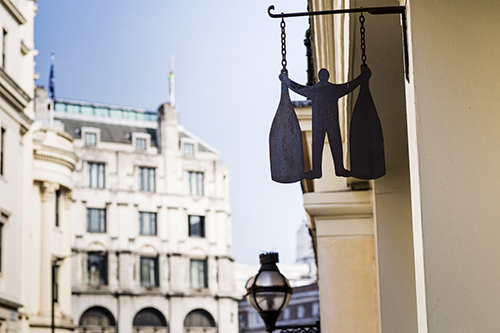
The wine fairs did inspire many a blog at the time. Just being amongst so many growers, and sensing the energy of the many and various interactions, was a joyous experience for anyone involved in the organisation of such events. When you feel the palpable buzz and know that the event was six or more months in the planning and that all the work came to fruition, there is an undeniable feeling of satisfaction… This is what we do it for, and where we justify our existence, is that these fairs have become a celebration of the artisan natural wine philosophy.
One year, having inhaled the fumes of glory in the aftermath of one particular wine fair, I rhapsodised in a blog about the sheer vitality of the occasion, from describing the glowing colours of the wines to the buzzy energy of a thousand animated voices. For once the blog elicited a negative response, a shower of rain on my happy parade. I recalled the quote from The Mikado: “I can’t help it. I was born sneering.”
We wanted to uncover the things that united us in our love for wine. A counter-cultural element was occasionally necessary in this endeavour; many of our growers had been victimised in various ways by standard boards, appellation authorities and consumer tasting panels. Natural had become a badge of honour in the war against the myrmidons of standardisation. Over the years, we wrote in support of Natural Wine Selection Theory and Craig Hawkins’ Testalonga Wines, both of whom has been refused export licenses for… lack of typicity! A few years later, we witnessed how Olivier Cousin and Stefano Bellotti were attacked and penalised by almost malevolent (certainly daft) bureaucracy. In the end, natural wine simply outgrew its oppressors. Many of these political struggles are captured in the blogs. It was an interesting time for wine.
But I digress, as is the wont of the blog. I enjoy these many roads to nowhere. The freedom of the blog is the freedom to go where you want and not necessarily to prove a point. Recently, I wrote a blog exploring biodynamics from various angles including historical, practical and ethical, in the end, you realise there may be preps and Demeter-approved ways of doing things, but farming is always learning as you go, observing nature and her rhythms. Biodynamics doesn’t unlock a single immutable truth about vine growing, but it does create a solid framework for actions. When I finished the blog, I thought more about the people and their farms, not whether the preps are an improvement on something else or whether it is all basically hocus-pocus. The more you write, the more you research, the more you find out that the truth is rarely simple, nor can all propositions be proved by pointy-headed scientists in a lab in a petri dish. There is so much that we don’t know that we need a certain amount of humility in our approach and in our tone when tackling complex subjects.
***
The Caves blog is now largely a mix of thoughts and opinions combined with a certain educational intention. The primary objective is sharing information – that may be news, or some interesting fact that casts new light on a particular subject. The educative element recently has involved defining wine terms, expressing things in a simple but not simplistic way. It is surprisingly difficult, for example, to find a good wine glossary out there, so I came up initially with the tongue-in-cheek The Real Alternative Wine Glossary to prick the pomposity of wine terminology, followed by The Unalternative Wine Glossary as a kind of reference manual of nuggety definitions. In a similar vein we produced an A-Z of Grape Varieties and embarked on other semi-definitive projects such as 100 Great Natural Wines (from our list) and The 50 Best Vineyards. Hint to neophyte bloggers – when in doubt, start compiling long lists. Ancillary blogs have included descriptions of vineyard visits, decanting specific wines and growers (in-depth introductions), essays about mark ups and wine service in restaurants, how to create an interesting wine list and even how to build and run a business. At the beginning of the year, I will always endeavour to predict what is to come; at the end of the year, I will invariably reflect on how wrong my predictions were. I studiously avoid writing about trends in wine, unless it is to contradict received wisdom. And to point out that one swallow of a particular wine does not make a summer, figuratively speaking.
Indeed, the most fertile ground for any blogger is to take a wine truism and completely invert it.
Recently, I have become fascinated by the idea of how we taste and what goes on in our grey matter when we are performing that action. My interest in wine has developed from the physical to the quasi-metaphysical. I am curious about taste, but equally I don’t want to think about it too much. I am after epiphanies, but those cannot be summoned on a whim even on a fruit or a flower day. I want to be surprised – yes, that’s it – and to communicate that sense of pleasurable shock that a great wine, or maybe the right wine at the right time, may confer. That shock translates into an effusion that is surprisingly laconic, a single superlative that says so much more than a thousand tumbling bumbling words. What I am saying is that I am not looking for flip definitive statements, rather I am happy to cloud the issues, blur the boundaries. Wine is not clear or obvious; it is dense and deeply layered, unfiltered and unfined.
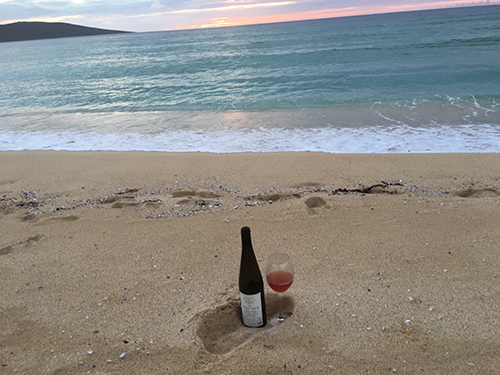
For all that, what is there to say that hasn’t been said already? And avoiding the banal. Difficult to transition from the airy-fairy philosophising to stating that a particular Sauvignon does smell like cat’s pee in a gooseberry bush. So difficult to be original in a closed wine world where more than ever, there are thousands of voices opining noisily. Just as in Instagram-world a mixture of the eroticism of certain wine labels and the professionalism of the formatting can lead to hundreds of likes and arouse multiple responses, the irresistible rise of blogs as opinion pieces, shows that those who shout loudest – regardless of the quality of research or the justness of the opinions articulated – tend to be heard most easily.
Tempting as it is to intervene in the virtual brouhaha, I now prefer to accentuate the real positives and eliminate the negatives when writing about natural wine. Wine may just be fermented grapes; it also gives rise to fermented words, a strange juice that has launched nigh on a thousand blogs (locally), showing that it is a subject capable of exerting endless fascination and controversy. What is it about these grapes of wrath? That is, by the way, how I describe a hangover caused by imbibing a surfeit (one glass) of cheap sulphurous, Soave (say). One couldn’t imagine the internet raging about my neighbour’s elderflower burgundy. Natural wine will always inspire us, however. Fewer polemics and more Homeric* (Mmmm… natural wine) extolling.
*The Simpson, not the epic 8th century BC poet “who taught Greece.”

